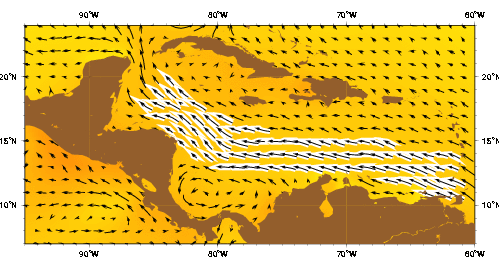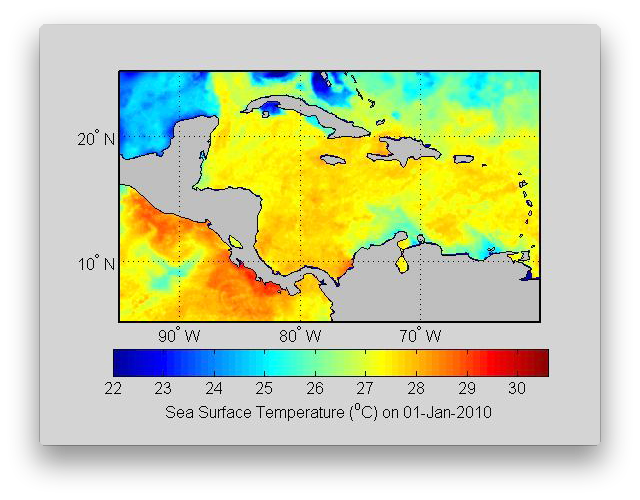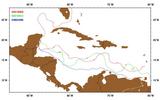 |
Figure 1.
The Caribbean current as represented by the Mariano Global Surface
Velocity Analysis (MGSVA).
The Caribbean Current transports significant amounts of water
northwestward through the Caribbean Sea and into the Gulf of Mexico,
via the Yucatan Current. The source water for the Caribbean Current is
from the equatorial Atlantic Ocean via the North Equatorial, North
Brazil, and Guiana Currents. The counter-clockwise circulation of the
Columbia-Panama Gyre is evident off-shore of southern Central America
(Nicaragua, Costa Rica, and Panama) and northern Colombia.
Click here for example plots of
seasonal averages.
|


|
Figure 2.
Global Ocean Surface Velocities from Drifters
(top panel w/ SST, bottom panel w/ Speed)
Figure Caption is Under Construction.
Click here for example plots of
seasonal averages.
|
 |
Figure 3.
There are strong upwelling regions offshore of northern South America and
the northern part of the Yucatan peninsula. This upwelling results from Ekman
transport and the predominant westerly trade winds. The Caribbean Current
transports relatively cool water from the Venezuela coastal region into the
interior of the Caribbean Sea where it is quickly warmed. Examples of this can
be observed in March and June.
( Click the thumbnail to play the animation. )
|
 |
Figure 4.
|
 |
Figure 5.
|
 |
Figure 6.
|
 |
Figure 7.
These buoy trajectories illustrate the Caribbean Current is a
continuous flow throughout the Caribbean Sea that brings tropical waters
northward to feed the Yucatan Current. The path of buoy 09802896 is near the
southern boundary of the Caribbean Current. Buoy 00018809 ends up in the Loop
Current, Florida Current, and then the Gulf Stream.
|
 |
Figure 8.
These buoy trajectories indicate significant eddy motion in
the Caribbean Current. The initial path of buoy 09802862, with its many loops,
indicates that the rotary motion of this buoy is greater than its
translational motion. On the other hand, the cusp-like motion of buoy
0952392 occur when the rotary and translational motion are the same speed.
Buoy 09825579 loops once and then its trajectory folds back on itself,
indicating significant eddy-stream interaction, just like Gulf Stream Warm
Core rings interacting with the Gulf Stream current.
This buoy ends up in Cuban coastal waters.
|
 |
Figure 9.
AVRRR image of the sea-surface temperature (SST).
|
 |
Figure 10.
Geography of the region.
|
 |
Figure 11.
Topography/Bathymetry of the region.
|











